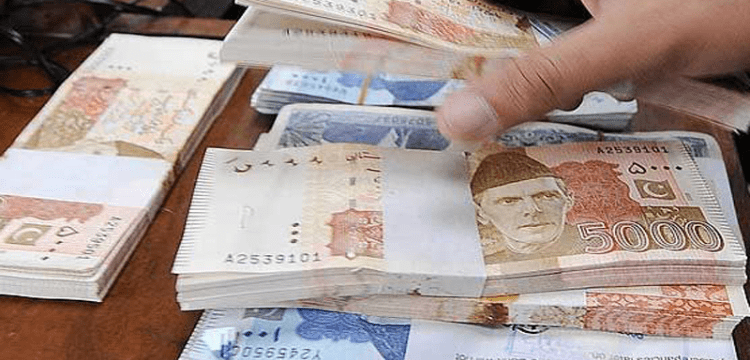[vc_row][vc_column][vc_column_text dp_text_size=”size-4″]The Pakistani rupee depreciated nearly 1% against the US dollar during the early hours of trading in the interbank market on Tuesday.
At around 10:15 a.m., the rupee was trading at 287.90, down Rs2.86 against the US dollar in the interbank market.
The rupee remained under pressure against the US dollar the day before, closing at 285.04 in the inter-bank market, down Rs1.25 or 0.44%.
Experts believe the market is waiting for the International Monetary Fund (IMF) to restart its Extended Fund Facility (EFF) programme, which has been stalled since last year.
“The IMF programme uncertainty is putting pressure on the Pakistani rupee,” Sana Tawfik, vice-president research and senior analyst at Arif Habib Limited (AHL), told Business Recorder.
Read More: Third generation of Bhutto awaits SC justice, says Bilawal
“The country’s foreign exchange reserves have also declined in recent weeks,” she added, “which is another source of concern for investors.”
Tawfik also stated that the State Bank of Pakistan’s (SBP) recent move to levy fines on exporters who fail to receive payments would be ineffective.
Last week, the central bank asked exporters to bring delayed export proceeds to Pakistan by April 30 or face a lien of up to 9% of the export proceeds amount.
In a significant development, Finance Minister Ishaq Dar, accompanied by a high-powered delegation, will travel to the United States from April 10 to 16 to attend the IMF and World Bank’s annual spring meetings.
During the visit, the delegation will meet separately with IMF officials, it has been learned.
The incumbent government has already stated that it has met all of the international lender’s requirements for the release of the $1.1 billion tranche.
Globally, the US dollar slid on Tuesday after a drop in US manufacturing activity last month signalled further signs of a slowing economy and trumped renewed inflation concerns following OPEC+’s surprise output cut.
According to an Institute for Supply Management (ISM) survey released on Monday, manufacturing activity in March fell to its lowest level in nearly three years as new orders continued to fall, with all subcomponents of its manufacturing PMI falling below the 50 threshold for the first time since 2009.
The US dollar index was down slightly at 102.02, having dropped more than 0.5% on Monday.
Oil prices, a key indicator of currency parity, were steady in early Asian trade on Tuesday after OPEC+ plans to cut more production jolted markets the day before, with investors’ focus shifting to demand trends and the impact of higher prices on the global economy.[/vc_column_text][/vc_column][/vc_row]











